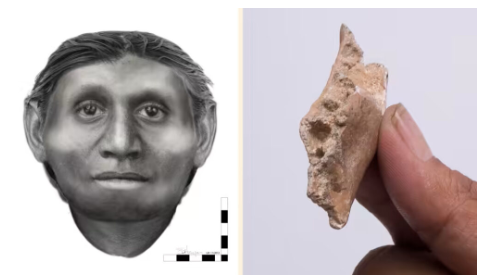
Based on recently discovered hominid fossils, dwarf “hobbits” inhabited the Indonesian island of Flores for hundreds of thousands of years. An international study team has found a fossilized miniature jaw bone and six little teeth from an adult and two children that they believe to be 700,000 years old. This discovery builds on the original hobbit discovery that garnered international attention in 2004.
According to the findings published in the journal Nature, the scientists surmise that the newly discovered fossils are the progenitors of the hominid species Homo floresiensis, whose bones were found in 2004 and which are thought to have lived about 55,000 years ago.
Yousuke Kaifu of Tokyo’s National Museum of Nature and Science, who oversaw the dating and identification of the fossils, stated that they “appear to be remarkably similar to those of Homo floresiensis.” The realization that Homo floresiensis already possessed its diminutive size at least 700,000 years ago is what really caught us off guard.
Following the first discovery, there was a discussion among paleontologists regarding whether the fossils showed a pathologically dwarfed modern human or some other species of hominid that had not yet been discovered.
The archaeologist who oversaw the excavation of the jaw fragment and teeth from sedimentary rock layers at Mata Menge on Flores, Gert van den Bergh of Wollongong University in Australia, said, “This find has important implications for our understanding of early human dispersal and evolution in the region— and quashes once and for all any doubters that believe Homo floresiensis was merely a sick modern human (Homo sapiens).”
Not involved in the Flores research, paleontologist Aida Gómez-Robles of George Washington University in the US concurred, saying, “The current findings…confirm beyond any reasonable doubt that Homo floresiensis is a distinct hominin species with deep evolutionary roots.”

The original hobbit remains were discovered in the Liang Bua cave, 70 kilometers away from the discovery site. The team decided to explore the fossil-rich sandstone at Mata Menge because, hundreds of thousands of years ago, there was a stream that meandered through an open grassland with a few trees, an environment that was preferred by early hominins for living. Neighboring simple stone tools had already been discovered.
When the hobbit ancestors first arrived in Flores and the reason behind their drastic reduction in size compared to other known hominins are the two main evolutionary mysteries.
Stone tools from roughly a million years ago, which are thought to have been left behind by Homo erectus, a hominin species that was then migrating across southeast Asia on foot, are the earliest evidence of human presence on the island.
Mr. van den Bergh thinks that some people may have arrived on Flores by mistake because there is no archeological proof of boatbuilding from that era. They might have been washed out to sea by a tsunami and drifted on debris.
Other animals that live in isolated island populations frequently experience evolutionary dwarfing. Two extinct pygmy elephant species once lived in Flores. In 300,000 years, the stature of the Homo erectus founding population would have fallen by roughly one-third, to around one meter tall, and the size of its brain would have shrunk by half.

A different theory is that Homo habilis, an older and smaller species of human, visited Flores over a million years ago and experienced a slower process of dwarfism.
This is less likely, according to the researchers, because there is no proof that hominins were present in what is now Indonesia a very long time ago.
The only way to unravel the puzzle is if further thorough excavation work on Flores yields more complete skeletal remains of ancestral hobbits, including skulls and limbs.
